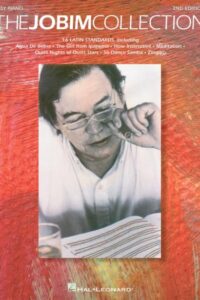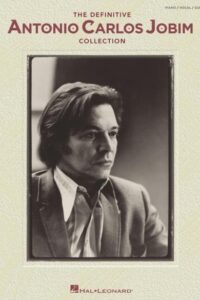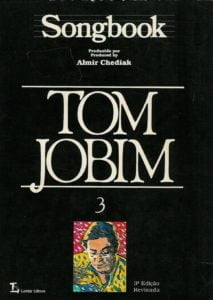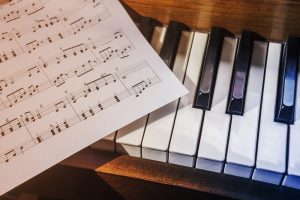Table of Contents

Best Sheet Music download from our Library.
Come join us now, and enjoy playing your beloved music and browse through great scores of every level and styles!
Can’t find the songbook you’re looking for? Please, email us at: sheetmusiclibrarypdf@gmail.com We’d like to help you!
Antonio Carlos Jobim and Herbie Hancock – Wave (1993)
Tribute Concert, Live in Sao Paulo
“Wave”: The Timeless Bossa Nova Masterpiece by Antônio Carlos Jobim

Please, subscribe to our Library.
If you are already a subscriber, please, check our NEW SCORES’ page every month for new sheet music. THANK YOU!
Few songs capture the essence of bossa nova as elegantly as “Wave”. Composed by the legendary Brazilian musician Antônio Carlos Jobim (also known as Tom Jobim), this instrumental piece is a shining example of the genre’s sophistication, blending smooth jazz harmonies with the rhythmic sway of samba. Released in 1967 on the album Wave, the song remains one of Jobim’s most celebrated works, admired for its melodic beauty and effortless cool.
The Composition and Style
Unlike many of Jobim’s other famous compositions, such as “The Girl from Ipanema” or “Corcovado”, “Wave” is primarily an instrumental piece, though lyrics were later added by Jobim himself in Portuguese (“Vou Te Contar”). The song is built on a gentle, rolling rhythm that mimics ocean waves—fitting for its title.
The melody is deceptively simple yet harmonically rich, featuring lush jazz chords that glide seamlessly over a bossa nova beat. The arrangement often includes soft piano, light percussion, and warm orchestration, creating a serene and sophisticated atmosphere.

Cultural Impact and Legacy
“Wave” arrived during the peak of bossa nova’s international popularity, following the success of Getz/Gilberto (1964). While not as commercially dominant as Jobim’s vocal hits, the song became a favorite among jazz musicians and has been covered by countless artists, including:
- Frank Sinatra (on his 1969 album Sinatra & Company)
- Oscar Peterson
- Quincy Jones
- Modern jazz ensembles and contemporary Brazilian artists
The song’s influence extends beyond jazz—it has been sampled in hip-hop, used in films, and remains a staple in lounge and easy-listening playlists. Its timeless quality lies in its ability to evoke both relaxation and sophistication, making it a perfect representation of bossa nova’s charm.
Why “Wave” Endures
“Wave” embodies the spirit of Rio de Janeiro—carefree yet refined, rhythmic yet soothing. Jobim’s genius was in creating music that felt both complex and accessible, and this piece is a prime example. Whether heard in a jazz club, on a beachside terrace, or in a quiet moment at home, “Wave” transports listeners to a world of gentle breezes and rolling tides.
More than half a century after its release, “Wave” remains a testament to Jobim’s mastery and the enduring appeal of bossa nova. It’s a song that doesn’t just invite listening—it invites feeling.

Herbie Hancock & Tom Jobim’s Magical Performance of “Wave” – São Paulo 1993
One of the most memorable moments in bossa nova and jazz history took place in 1993 at the Free Jazz Festival in São Paulo, when jazz legend Herbie Hancock shared the stage with the godfather of bossa nova, Antônio Carlos Jobim (Tom Jobim), for a breathtaking rendition of “Wave.”
The Significance of the Performance
This concert was part of the Free Jazz Festival, a major Brazilian music event that brought together international jazz icons and Brazilian masters. Herbie Hancock, already a giant in jazz fusion and post-bop, had long admired Jobim’s work, and their collaboration was a rare meeting of two musical geniuses from different worlds—yet united by their love of harmony and rhythm.
The Arrangement & Improvisation
When Hancock and Jobim performed “Wave,” they transformed the song into a dialogue between piano and keyboards, blending:
- Jobim’s signature bossa nova elegance – His playing was lyrical, flowing, and deeply rooted in Brazilian rhythm.
- Hancock’s jazz virtuosity – He added chromatic harmonies, syncopated improvisations, and subtle electronic textures (using a synthesizer).
The result was a fresh yet respectful reinterpretation—Jobim’s original melody remained intact, but Hancock’s improvisations gave it a modern, exploratory edge. The crowd responded with awe, witnessing a once-in-a-lifetime fusion of jazz and bossa nova.
A Historic Moment in Brazilian Music
This performance was more than just a concert—it was a symbolic passing of the torch. By the early 1990s, Jobim was already a living legend, while Hancock represented the evolution of jazz into new realms. Their collaboration showed how bossa nova could transcend borders while staying true to its roots.
Legacy of the Performance
- A Rare Recording: While no official album was released, bootleg recordings and festival archives keep this moment alive.
- Influence on Future Collaborations: It inspired later cross-genre projects, like Hancock’s “Gershwin’s World” (1998), where he continued exploring Brazilian rhythms.
- A Testament to Jobim’s Universality: Even decades after “Wave” was written, it remained a canvas for reinvention.
The 1993 Free Jazz Festival performance of “Wave” by Herbie Hancock and Tom Jobim was a historic meeting of two musical worlds. It proved that great music knows no boundaries—whether between jazz and bossa nova, or between generations of musicians. For those lucky enough to witness it live, it was pure magic.
Browse in the Library:
Or browse in the categories menus & download the Library Catalog PDF:
Tom Jobim and Oscar Peterson play Wave


